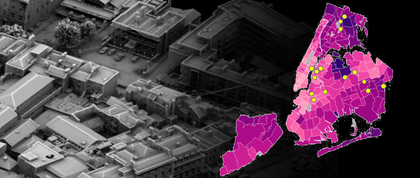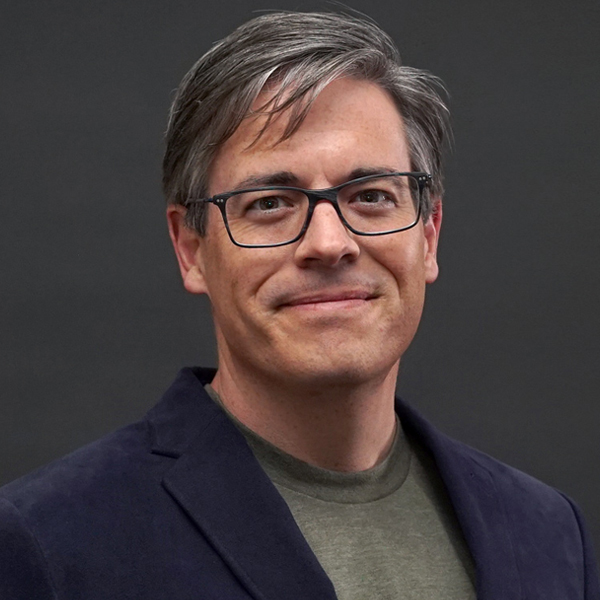
Image: On the left, a LiDAR image of one of the study areas. On the right, a map of NYC pinpointing the 16 NYC healthcare facilities from which data was collected. The color gradient displays the case rate per 100K, from 634 cases in light pink to 4,610 in purple.
When disease transmission goes viral, as with COVID-19, all of us serve as both susceptible “hosts" and “vectors" (or means of transmission).
We know that to reduce the virus’s deadly toll, we must minimize person-to-person contact. By now it’s obvious that it’s not enough to simply limit the total number of people who can gather together socially.
As our society struggles to re-open amid the continued spread of COVID-19, we’re witnessing the real-time implementation of vector control measures that target the way people engage with physical spaces and social environments. These include a wide array of “surface vectors” like doorknobs, glassware, used PPE, and other objects with which people physically interact everyday.
It was timely, then, that just as Governor Cuomo announced the New York State on PAUSE executive order on March 22nd aimed at safeguarding all New Yorkers, GPH quickly joined colleagues at the Tandon School of Engineering, led by Dr. Debra Laefer, to collect “perishable” data on the initial implementation of the PAUSE ordinance during a critical 8-week period between March and May, 2020.
Thanks to a National Science Foundation (NSF) RAPID project grant, we assembled a team of field workers to work from a sampling frame of 16 locally-based healthcare facilities. They characterized both the vector environment and the associated travel and contact behaviors of individuals exiting each facility.
With precious little time to handle data collection and other logistics, our NYU RAPID team recorded over 5,000 observational records across the 16 sites, along with over 15GB of objective street-view imagery. That data is now being used to code on-the-ground conditions, such as the status of local retailers and public transportation entry-points.
The data collected, and the modeling of disease spread, made possible by this research provides an essential baseline for future efforts to study the way people interact with three-dimensional environments.
With this empirical snapshot of the COVID-19-related vector environment surrounding these NYC healthcare facilities, we’ll be even better positioned to understand and ultimately optimize ordinances like NYS PAUSE for future outbreaks.

Thomas Kirchner, MS, PhD
Assistant Professor of Social and Behavioral Sciences